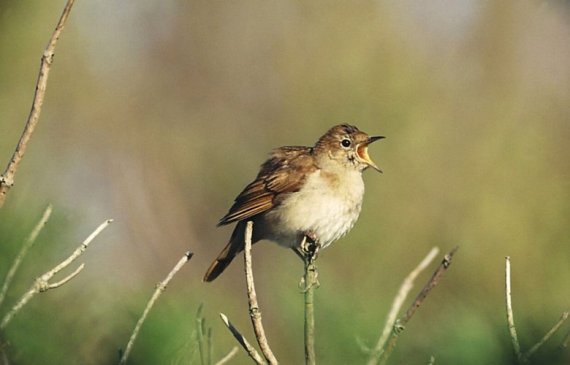Male nightingales sing exquisitely. And we humans are not the only ones to appreciate their musicality. Female nightingales are impressed too. In fact, they choose their partners for their singing prowess.
Recent research on several different bird species shows that fast warblers are particularly irresistible to the female of the species, explains Naguib. Those warbles are technically difficult, so you can distinguish yourself with them. Older nightingales, for example, sing those warbles better. But how exactly this works is still a largely unsolved riddle.
You can see the rhythms, melodies and variations
Marc Naguib
Together with a team of international colleagues, Naguib proposes a very different method of studying birdsong. The classic method of describing song concentrates on inventorying a bird’s repertoire. This is like describing a text by counting words: it leaves out a lot of information. The method introduced by Naguib and co, by contrast, focuses on rhythm, the variation in pitch and the purity of the tone. You can obtain a rhythm spectrum, for instance, by collating the lengths of the gaps between a note and the ones before and after it. For one hour of song you then obtain a pattern with clear clusters that are specific to the song of the bird in question. Naguib and his colleagues did this for the Thrush nightingale (Luscinia luscinia).

By plotting the discrete tones like this and drawing lines between them, you see a typical pattern of rhythms, melodies and variations used by the bird, all of which you miss if you only look at its repertoire. You can describe the purity of tones in a similar way. According to Naguib, this kind of chart shows at a glance the difference between a jazzy nightingale and a crooner.
The next step is to carry out behavioural experiments. Naguib: ‘We have recordings of the song of males who successfully attract females and of males who remained bachelors, and therefore have lower levels of fitness. You can manipulate those songs, removing certain parts, and observe how birds react to them then. Like this you can find out what makes birdsong attractive.’
Investigation of musicality in birdsong, Hearing Research 308 (2014) 71-83.

